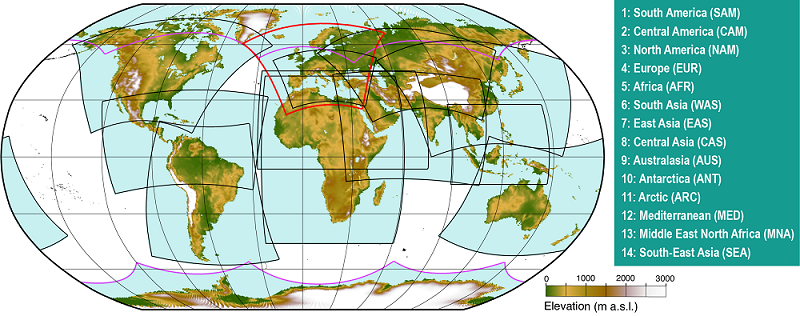
The Mediterranean is one of the world’s hot spots for climate change. Lower average rainfall and significantly higher temperatures, particularly in summer, will lead to a reduction in water resources and an increase in the severity of droughts and heatwaves.
The presence of an enclosed sea bordered by relief, a vast ocean to the east and one of the world’s largest deserts to the north, gives the Mediterranean basin a very special climate. A transition between oceanic, continental and desert climates, the Mediterranean climate is also characterized by frequent extreme events (violent winds, intense rain, drought, heatwaves, etc.).
Among these, Mediterranean episodes are the most destructive: intense rainfall often leads to rapid flooding (flash floods). The storms that trigger them generally occur in autumn, when the atmosphere begins to cool while the sea is still warm.

Intensification of heavy rainfall in Mediterranean regions in recent decades
An analysis of extreme rainfall events in the Mediterranean over recent decades reveals the following trends for French regions:
intensification of heavy rainfall in Mediterranean regions between 1961 and 2015: +22% on annual maximum daily totals, with very high inter-annual variability, which explains the high degree of uncertainty (from +7 to +39%) on the extent of this intensification;
an increase in the frequency of the strongest Mediterranean episodes, particularly those exceeding the threshold of 200 mm in 24 hours.

The study of intense precipitation and its future evolution remains a major challenge for climate modellers. These phenomena are relatively poorly represented in standard climate models. In recent years, the Cordex* international program has produced and made available sets of regional climate simulations at spatial resolutions (~10 km), enabling better representation of Mediterranean events and thus greater confidence in future projections.
Extreme analyses applied to Cordex models indicate an increase in the intensity of intense precipitation over the northern part of the Mediterranean basin. Over the French Mediterranean region, the increase in extreme precipitation is likely to be of the order of a few % on daily accumulations per °C of warming.
Although an increase in their intensity is emerging, the future evolution of extreme precipitation events in the Mediterranean remains quantitatively uncertain. Ongoing research should make it possible to make progress on this subject, firstly, by better combining global and regional climate simulation ensembles and, secondly, by using new-generation climate models capable of reaching kilometer scales and better representing atmospheric convection. These new models should also make it possible to study the possible evolution of hourly precipitation totals.
Notes
https://climate.copernicus.eu/worldwide-regional-climate-projections-now-available-through-c3s




